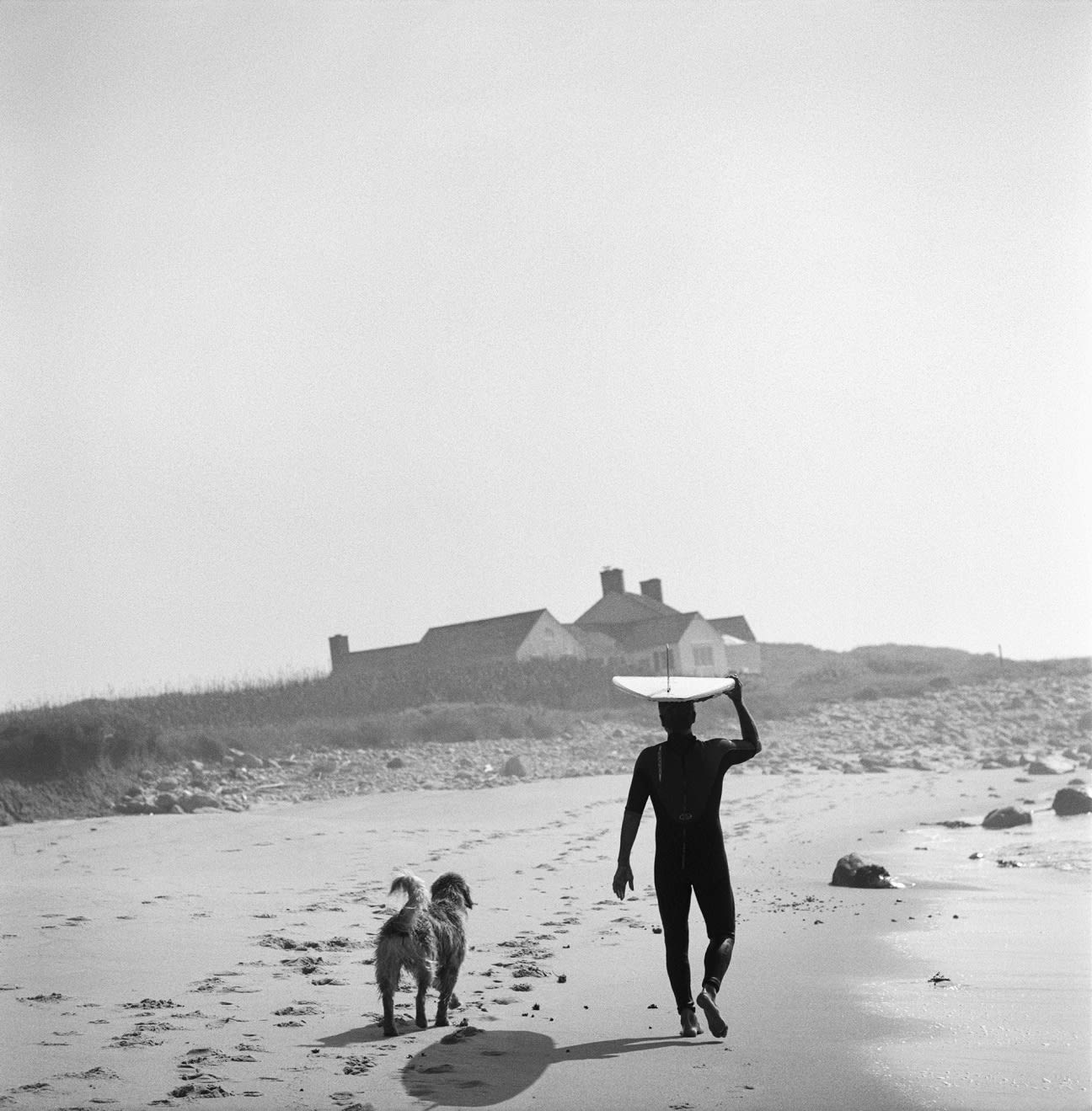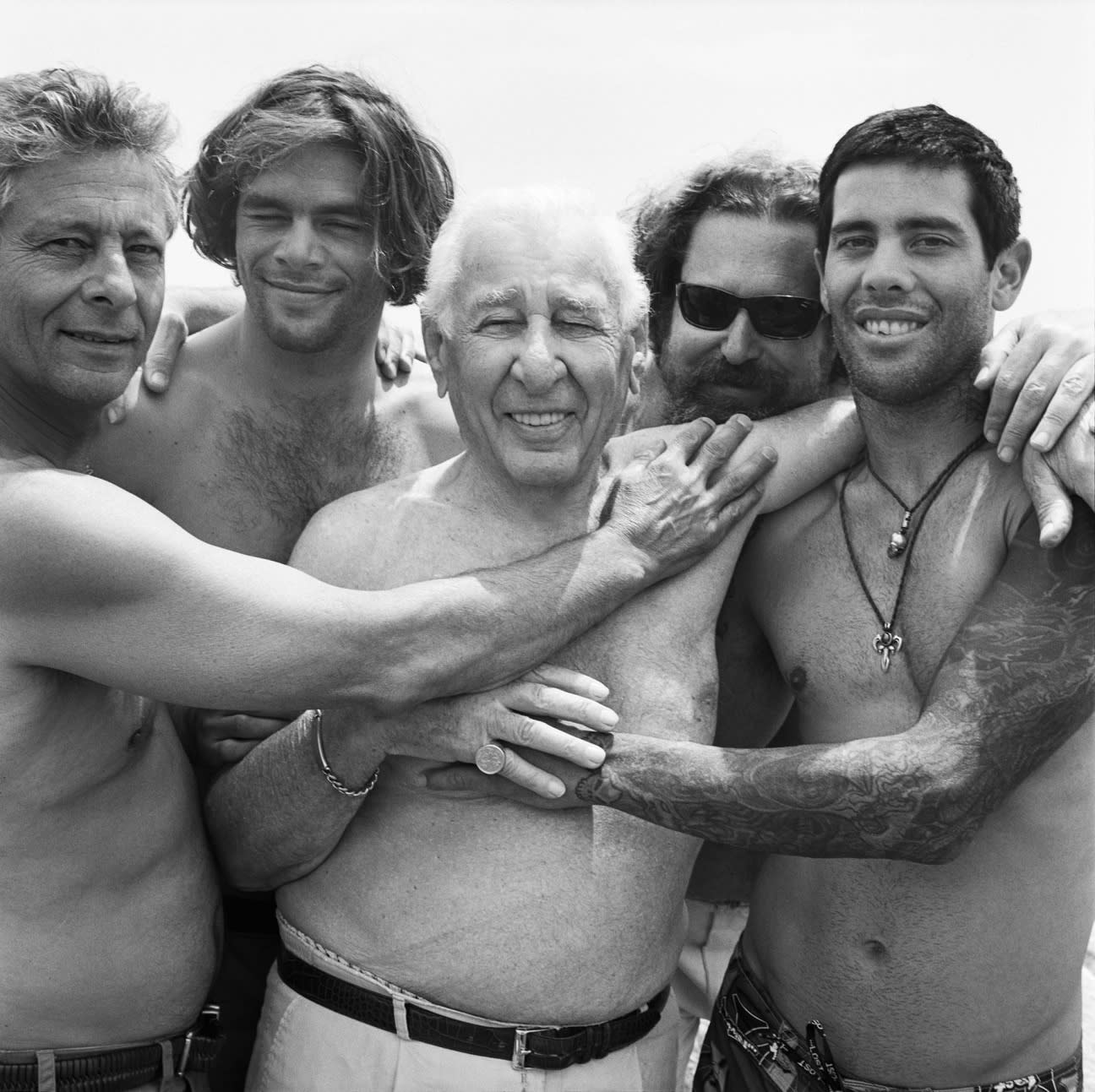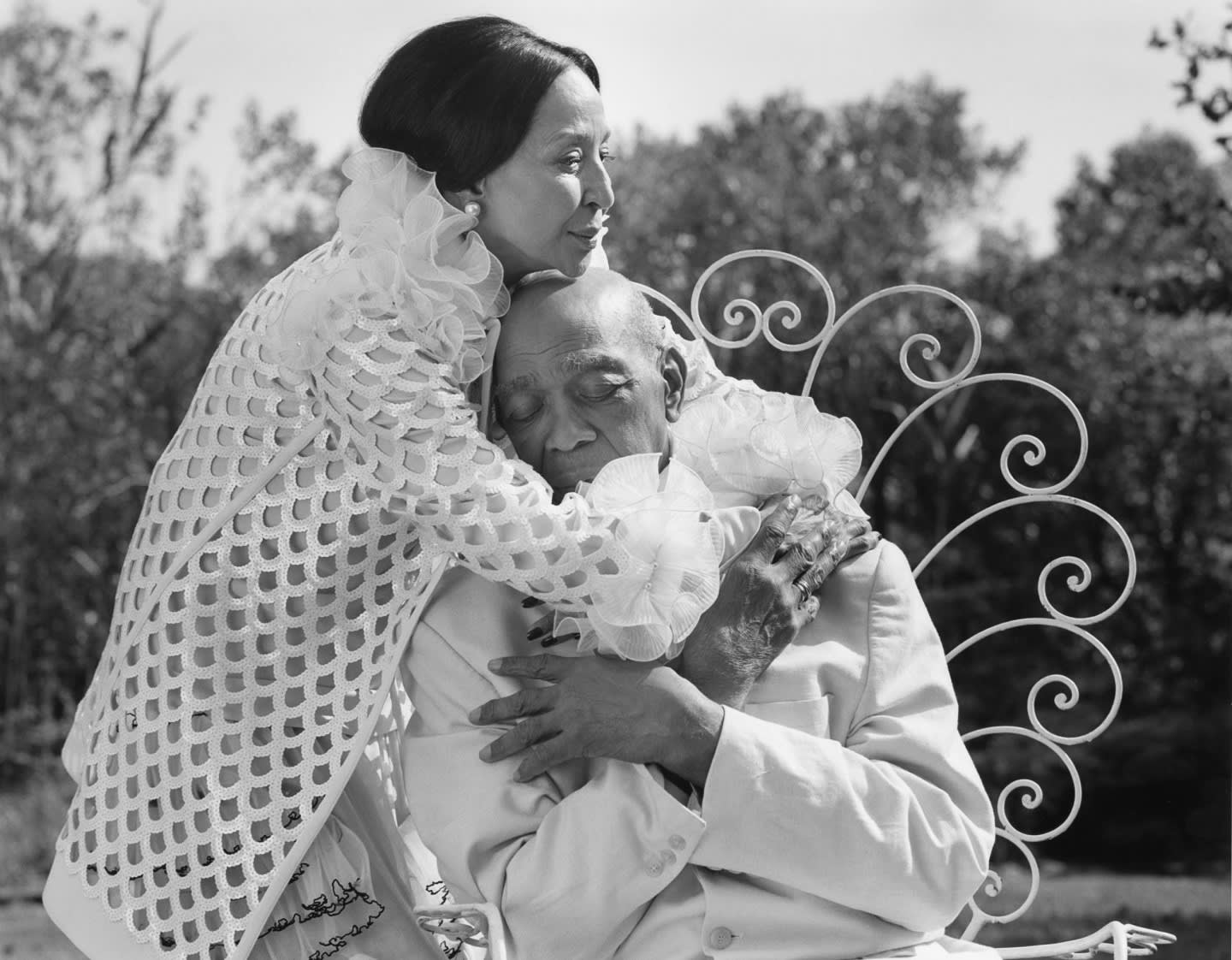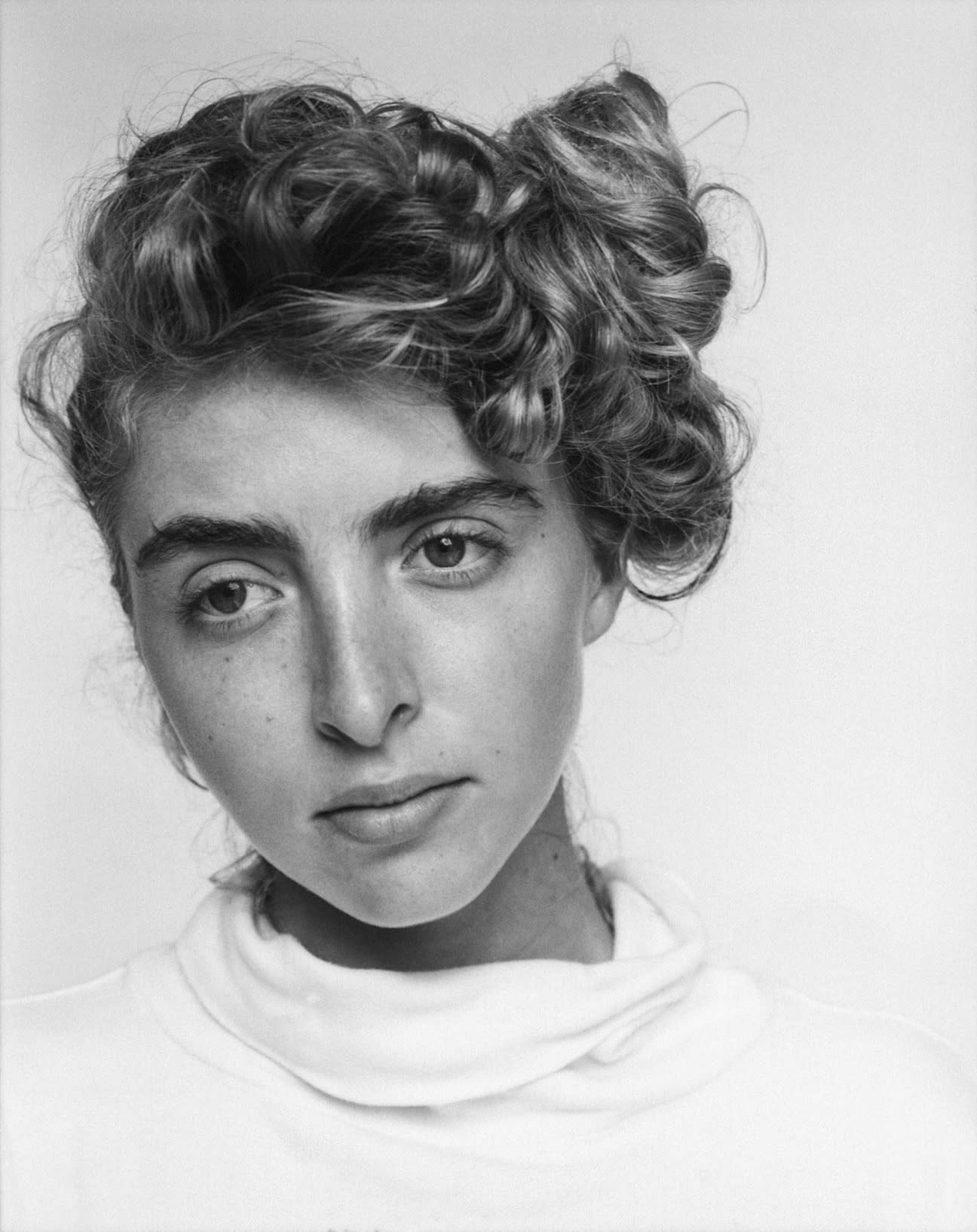The artist has long been a mainstay in East End culture, making art and getting acquainted with some of the most innovative creatives on the island. Here, he remembers the years past in a series of photographs.

Tai and True at the Morrissey estate at sunset, Montauk, 2002.




I met Peter Beard in New York. He was living in a car in front of Lexington Labs, downtown, and used its bulletin board as his personal diary. He would hold court with all the admiring photographers, like me, and tell stories about his adventures, which would distract us from our work. Peter was extremely charming. One time, C.Z. Guest said to me with a wink, “You know that Peter Beard—he doesn’t wear anything under the sarong!”
When Nan and I rented the Morrissey estate, Peter would come over all the time. He’d call me occasionally and say, “I’ve met a wonderful girl in town and she’d love nothing more than to come meet your dogs.” I always said, “Sure.” But any women who stopped by with him could have cared less about my dogs—they only had eyes for Peter.
I did a story for Italian Vogue with Minnie Cushing at Morrissey’s house. Minnie had been a society darling—Foxcroft, apprentice to Oscar de la Renta—a real beauty with a mane of chestnut hair and a wild streak. She used to ride a motorcycle and surf off the beach in front of her family’s house in Newport, Rhode Island.

Francis Bacon by Peter Beard with the inscription “Special Delivery to Bruce from next door, Driftwood Cove, July 14, 2002.”
Minnie and Peter met and fell in love. At their Newport wedding, arguably the most glamorous of all time in America, the couple broke away from their guests and walked out to the cliff. “Let’s jump in,” dared Peter. Minnie went first, but then Peter stayed on land, laughing and looking better than ever.
When Minnie came to the house to do the Vogue sitting with me, she invited Peter to come along. He put together a collage of all the photos he’d taken on their honeymoon safari. It was pretty extraordinary. When it came to his work, Peter was the most generous photographer I have ever met.
If you mentioned a photo of his that you had seen and liked—and if he liked you—then there was a good chance it would show up in your mailbox a couple of days later, hand-inscribed like the Francis Bacon one seen here. If the photo was from his time in Africa, then the signature would be written in his blood. I took his generosity as a good model for how to be a photographer. Peter was like the old sage of Montauk, but with the heart of a child. I really miss seeing him out there.

Julian Schnabel is my next-door neighbor in Montauk. For years, I’ve photographed him and his family as it has grown, and I’ve taken special joy in seeing his children find success as artists and gallerists and filmmakers and actors in their own right. We’ve had so many great times together.
The photograph above, showing Julian’s father, Jack, was taken with the great surfer Herbie Fletcher (at left) and his sons, Nathan and Christian, at Morrissey’s house. When we were renting it, Nan and I would wake up in the morning to let out the dogs, and Julian would often be strolling across the lawn with some surfer friends, off to check out the waves. He’s always reminded me of Cy Twombly in the way he puts together his homes with such care and elegance, but in a very relaxed way.

China Machado and Geoffrey Holder, Noyack, 2009.
As a young photographer, I grew accustomed to seeing lots of photos of China Machado, taken by Richard Avedon, in the pages of fashion magazines I hoped to work for someday. She didn’t look like any other model in those publications back then. China went on to become the fashion director of Harper’s Bazaar around the time it was being designed by Ruth Ansel and Bea Feitler.
China was an amazing editor. Oftentimes, she would take fabric on set to drape over the models and create the clothes she wanted to see just before the photograph was taken. I first photographed China at Morrissey’s house in Montauk for Interview with Nicolas Ghesquière, when he was still at Balenciaga. They got on really well—I think Nicolas was delighted to see her wearing clothes he had designed. He looked like a kid in a candy store that day.
Around the same time, I had also been working with Geoffrey Holder, along with his wife, Carmen de Lavallade, on a story for our All-American journal. I just knew that he and China would be great together in pictures, so we all gathered at her house in Noyack.
The combination of personalities was beyond crazy—I didn’t know where to look first. They were a little competitive with each other, but they absolutely loved working together. I asked Alex White, the fashion editor, to make China a gown out of all the photos she did with Avedon. I know that China’s daughter has been working on a film about her mother’s life. I can’t wait to see it when it’s done.

Rachel Feinsten, Key Biscayne, Florida, 1988.
When I first started to travel to Miami to work during the winter months, we rented a place in Key Biscayne. Models, lifeguards, hairdressers, and surfers were always coming through and hanging out at our place. The city was really wild and quite free in those days.
One time, a girl happened to stop by, and she looked nothing like any other person I’d seen in all of Miami-Dade County. It was as if she had stepped out of a 17th-century Italian painting: hair piled high, the most beautiful nose. Her name was Rachel Feinstein. She came from a wonderful family and was best friends with all the male models I was photographing at that time. She was like their kid sister, and they were her bodyguards.
To this day, I can’t help but smile when I run into her, because Rachel still has the same overwhelming enthusiasm and warmth that she had all those years ago as a teenager. She and her husband, John Currin, have a place in Orient Point, which is on the North Fork, across the sound from Nan and me.

Jane Wilson, Southampton, 2010.
I first became familiar with Jane Wilson through her husband, art critic John Jonas Gruen. I liked his book of photos of all the artists who lived on the East End in the 1960s. He captured that moment of bohemia in such a great, casual way, and Jane was always front and center in his pictures. Their backyard barbecues were attended by the likes of Willem de Kooning, Jane Freilicher, and Frank O’Hara. When I arrived at John and Jane’s house, I felt like I was in the presence of East End royalty.
Jane painted the atmosphere of that part of the world in such a delicate, evocative way. And the camera loved her—it’s no surprise that everyone from Ken Heyman and Inge Morath to Diane Arbus wanted to photograph her, or that Fairfield Porter had her sit for several portraits. We spent such a great day together. Their daughter, Julia, who works for the Keith Haring Foundation, stopped by. I’m sure she learned how to be a good caretaker of an artist’s legacy from growing up in their home.
